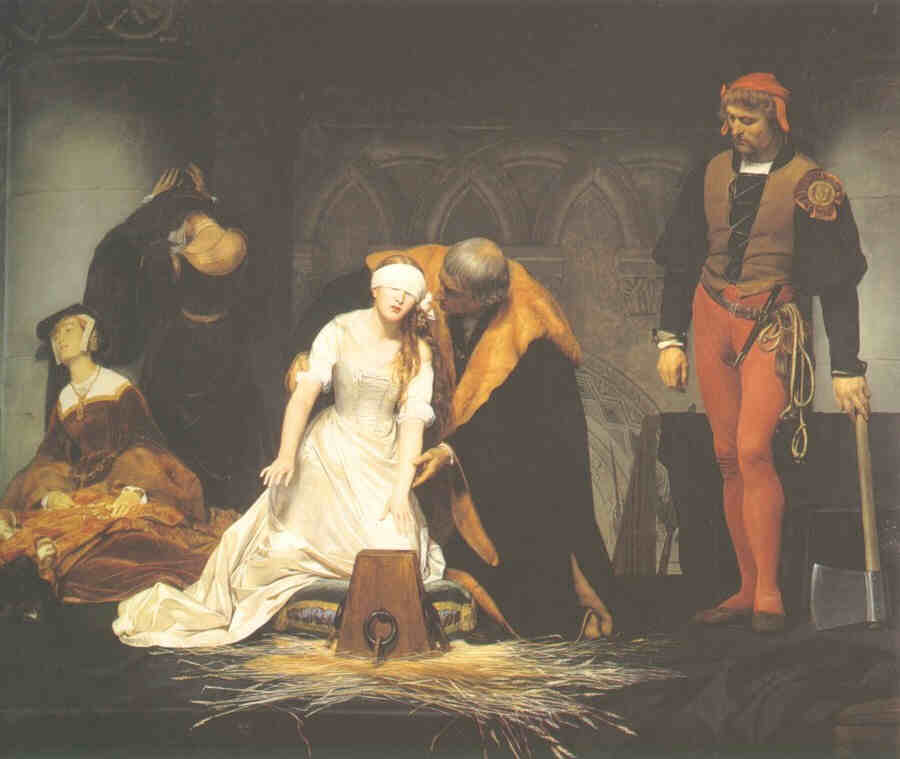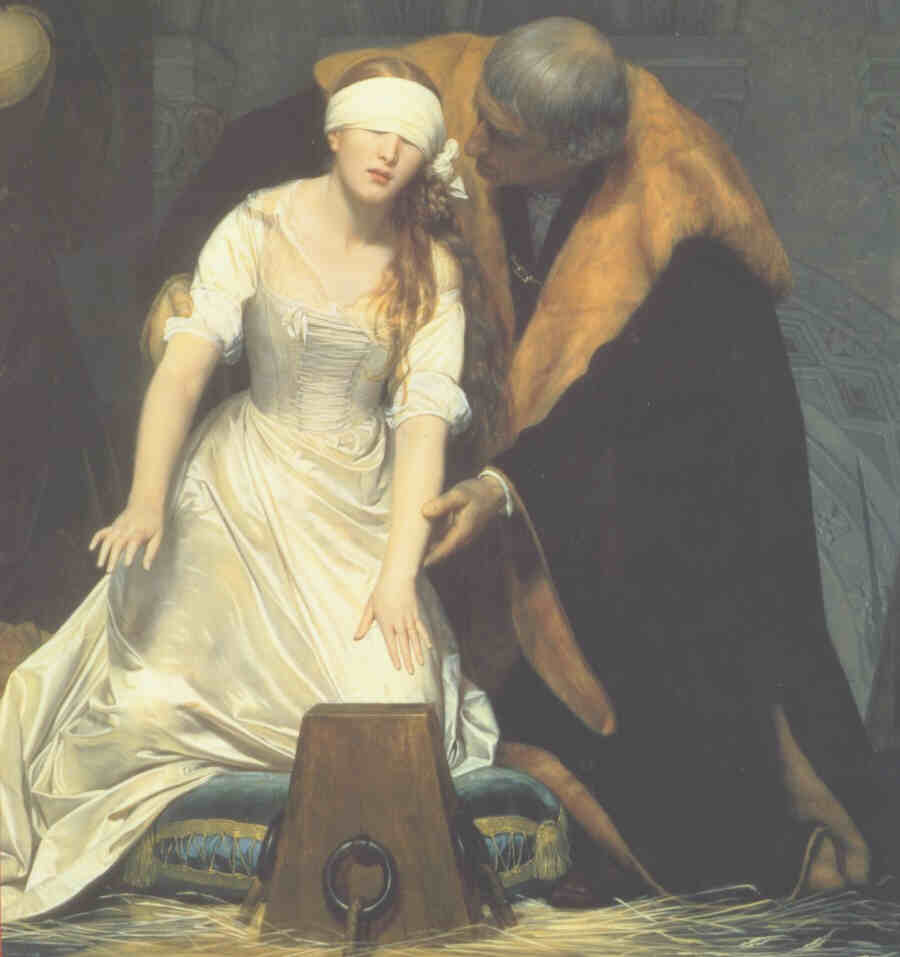
click on image for detail
THE EXECUTION OF LADY JANE GREY
by Paul Delaroche
1834
It is 12 February 1554, Lady Jane Grey, 16, who was queen of England for nine days in July of 1553, is about to be beheaded for high treason.
On 10 July 1553, four days after the death of the King Edward VI, Lady Jane Grey, a fifteen-year-old cousin of the late king, was proclaimed queen of England. Jane’s father-in-law, John Dudley, the duke of Northumberland, had persuaded the dying Edward that his cousin Jane, a Protestant, should be chosen the royal successor over his half-sister Mary, a Catholic. On July 6, King Edward VI died from tuberculosis at the age of fifteen and Dudley set about convincing the Royal Council to approve his daughter-in-law’s ascension. Although King Henry VIII, who died in 1947, stated in his will that Mary was to succeed Edward, Dudley was successful, and on 10 July Lady Jane Grey was proclaimed queen of England.
Two days into her reign, Dudley departed London with an army to suppress Mary’s forces, and in his absence, the Council declared him a traitor and Mary the rightful queen, ending Jane’s nine-day reign. By 20 July, most of Dudley’s army had deserted him and he was arrested. The same day, Jane was imprisoned in the Tower of London. Her father-in-law was condemned for high treason and on 23 August, executed.
On 13 November 1553, Jane and her husband, Guildford Dudley, were likewise found guilty of treason and sentenced to death, but because of their youth and relative innocence, Mary did not carry out the death sentences.
However, in early 1554, Jane’s father, Henry Grey, joined Sir Thomas Wyatt in his insurrection against Mary that erupted after her announcement of her intention to marry Philip II of Spain. While suppressing the revolt, Mary decided that it was also was necessary to eliminate all her political opponents, and on 7 February 1554, she signed the death warrants of Jane and her husband.
On the morning of 12 February , Jane watched her husband being carried away to execution from the window of her cell in the Tower of London, and approximately two hours later, was executed herself. After the sixteen-year-old was beheaded, her executioner, according to British tradition, held Jane’s head aloft with the words, “So perish all the queen’s enemies. Behold, the head of a traitor.”
THE ARTIST
Hippolyte “Paul” Delaroche was a French painter, born in Paris on 17 July 1797. He studied under Gros, and specialised in romantic historical subjects such as the Death of Queen Elizabeth (1827), Jeanne d'Arc en Prison (1824), Napoléon Crossing the Alps, Princes in the Tower (1830), and the Execution of Lady Jane Grey (1834).
From this period until 1841 he was engaged on his grandest work — the mural Apothesis of Art in the Ecole des Beaux-Arts, in the execution of which he was aided by Armitage and other of his pupils. Delaroche died on 04 November 1856.
Delaroche is best known today for his painting La Jeune Martyre. ^top^
